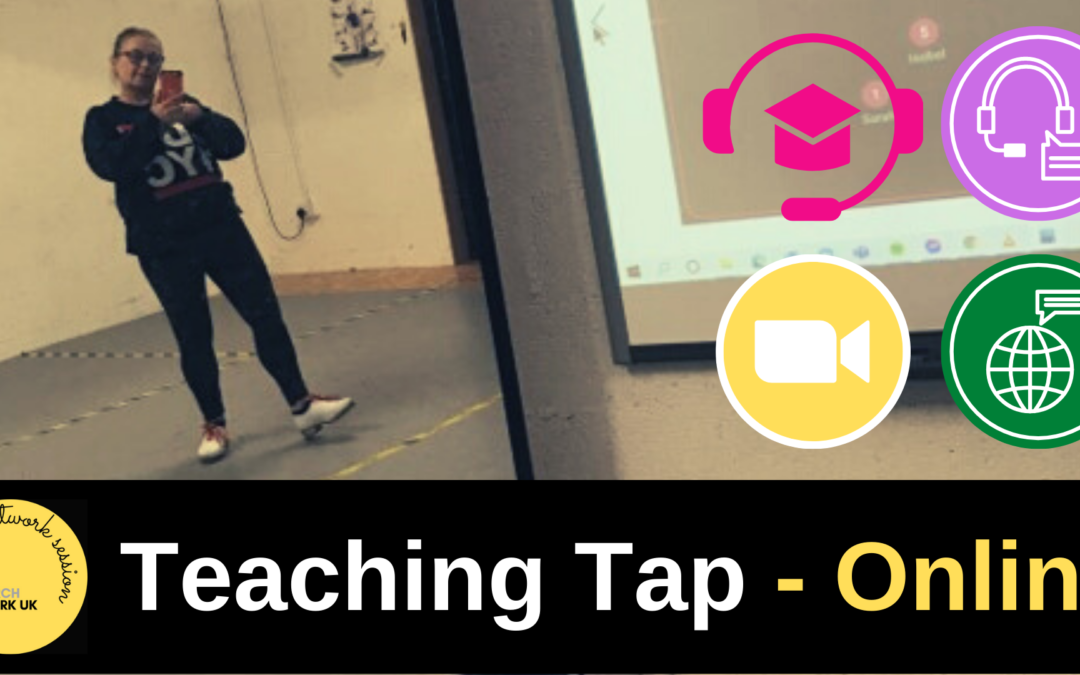
Nov 10, 2021
Tuesday 16 November 2021 19:30 GMT | 11:30 PDT | 14:30 EST/EDT | 20:30 CEST FREE
Book here
The next few sessions will focus on key areas of tap dance teaching and education. In each session, Trish Melton and other members of the group, will share their thoughts and experiences from their own teaching practice and research in tap dance pedagogy.
The COVID pandemic has challenged us as tap dance teachers as we converted to virtual delivery of our classes. As studios reopened there was a collective sign of relief as some bid a farewell to zoom – but for others there has been a benefit to this rethinking of our pedagogy and how we can effectively deliver when on-line.
Dr Trish Melton will discuss her research on the benefits of on-line teaching and what delivering on-line can support when we return to the studio. Approaches to hybrid teaching will also be discussed.
As well as sharing ideas, techniques and resources, we will open the floor for you to have group conversations, ask questions and share your own “research-in-progress” to gain feedback in developing your own approaches.
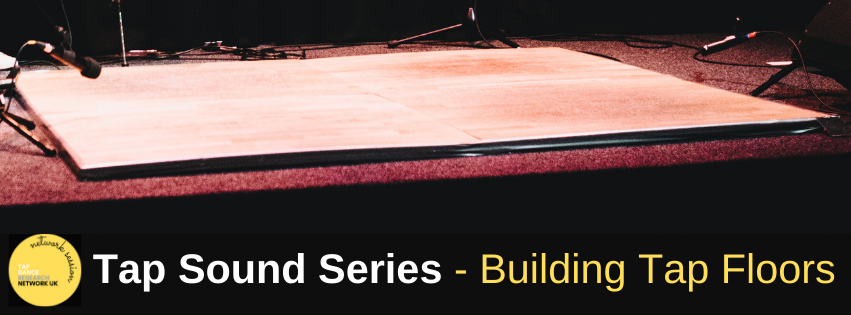
Sep 9, 2021
Took place online on Thursday 16 Sept
A fantastic session with some great information shared!
- Lee Payne from TDRN UK shared his experiences of dancing on different types of pre-made floors and building his own portable performance floors.
- Susan Filipiak spoke about building a triple sprung studio floor based on the tech specs for the legendary floor at Woodpeckers Studio in New York which was built by Brenda Buffalino and the home of the American Tap Dance Orchestra.
- Victor Perkins joined to tell us about his recently patented Jaia Board which he created with his daughter and is now retailing.
See below for more information and links…
From Lee Payne:
Some companies that provide portable floors of different sizes
https://uk.harlequinfloors.com/en/sectors/dance/tap-dance-floors
https://emea.rosco.com/en/product/rosco-subfloor
http://www.theballetbarrecompany.com/sprung_flooring.
https://uk.harlequinfloors.com/en/shop/home-practice/dance-boards/tap-turn-board-tap-dancing-board-harlequin-floors?utm_source=Google_PPC&utm_medium=cpc&utm_term=&utm_campaign=14295173187&gclid=Cj0KCQjws4aKBhDPARIsAIWH0JVuhD4qJJo2ZFDrLDWzqqavkeh-BGb3EQb_abS3WH_q6uaMTsTlI7UaAsCjEALw_wcB
https://www.etsy.com/uk/listing/697168457/dance-board-48-x-24-personalised?gpla=1&gao=1&
https://www.danceandstage.co.uk/smart-flex—sprung-flooring-for-dance-gyms-fitness-studio-floors
From Susan Filipiak:
“I was inspired by the wonderful floor (= instrument) that Brenda Bufalino had in her NYC Woodpeckers studio from 1989-1995. What a wonderful sound, full bass notes, high treble and everything in between. I built my studio in 1995 and have shared the plans with so many dancers (among them, Heather Cornell). Here are some photos and text to explain how I built a “triple-sprung, basketweave” floor.
Here is the original building specs for Brenda and the American Tap Dance Orchestra from 1989
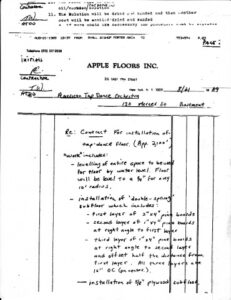
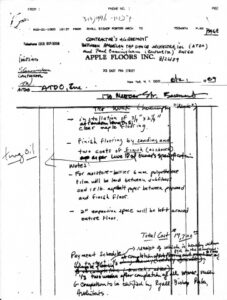
Here’s my notes to Heather Cornell, describing how I built the floor
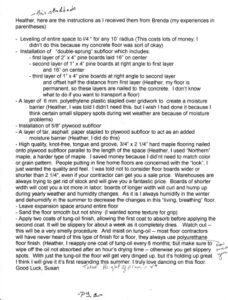
Here’s photos of my studio floor being built in 1995
Some useful links –
Tung oil – https://www.realmilkpaint.com/shop/oils/pure-tung-chinawood/
“Here are photos of a portable dance floor ‘Step-a-Tune’ made by Angelo Graziano, cabinet maker husband of clogger, Sheila Graziano and his description of his production: ‘The step-a-tunes are constructed of premium 2×4’s. they are jointed and thickness planned. A rabbet joint is cut (with tadoo blade) on one edge to a 3/4″ depth to accept a 3/4″ thick piece of birch cabinet grade ply. The corners are a 45 degree angle cut with splices added for structural and art form. Sanded 80 grit with boiled linseed oil finish. pricing is based on cost of materials plus labor. Elderly music store does sell them and ships them’”
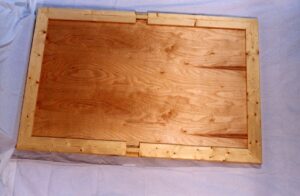
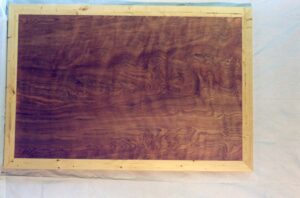
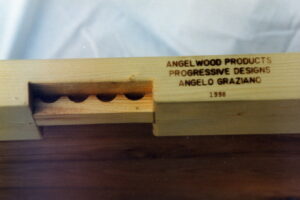
Step-a-Tune boards used by clog dancers – https://www.elderly.com/products/step-a-tune-portable-dance-floor
From Victor Perkins
Jaiaboards
“JAIABOARDS are eletronic tap boards that picks up vibrations and connections to an amplifier with out the use of microphones.
Microphones by nature suppress vibrations and picks up all sounds that travel through the air. As a result when tap dancers put microphones next to their boards they are not only picking up the sound of the taps but the sounds of the band in the background.
Using JAIABOARDS technology vibration sensors are used to to pick up the original tap sound caused by vibrations on the tap board without picking up any other sounds. This will allow the tap dancer to be heard over the band and plug into the sound system just like all the other instruments” (https://www.gofundme.com/f/jaiaboards-electronic-step-and-tap-board-patent)
Instagram link https://www.instagram.com/jaiaboards/?hl=en
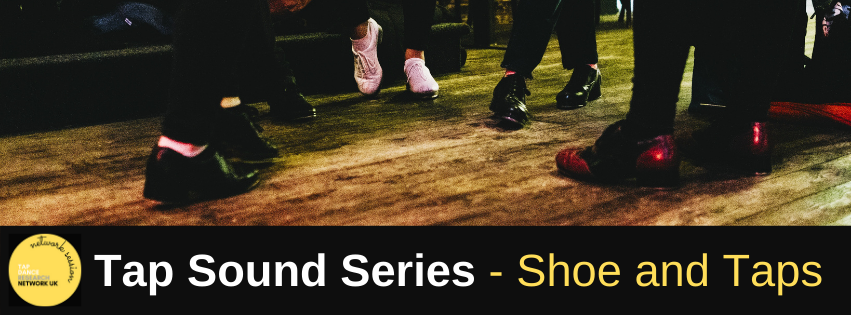
Aug 1, 2021
Thursday 12 August 19:30 BST | 11:30 PDT | 14:30 EST/EDT | 20:30 CEST FREE
For the next few sessions we are getting in to all things tap dance and sound! Shoes, microphones, floors, live sound, recording… These sessions lead by Lee Payne and Annette Walker will share information about suppliers, contacts and resources, as well as opening up the chance to have group conversations and ask questions.
This second session explores all things around shoes, taps and other ways of making sound in percussive dance styles. Learn more about the different kinds of shoes available and what different styes can offer. Have your shoes ready to ‘show and tell’ so you can share your experiences and learn from others. Get some great tips about how to maintain or adjust your shoes to achieve different sounds and fine tune your instrument.
Book your place for this FREE event
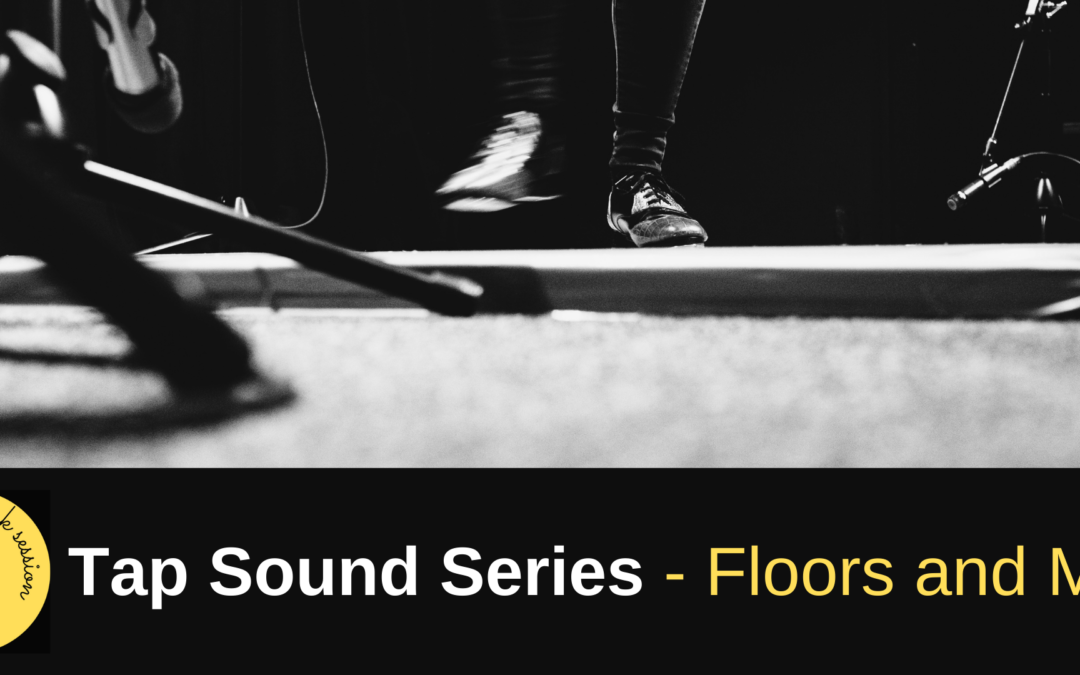
Jul 1, 2021
Thursday 8 July 19:30 BST | 11:30 PDT | 14:30 EST/EDT | 20:30 CEST
This first session of the series looked at floors and mics. Annette and Lee will talked about how to get set up with a portable tap floor and microphone for solo performance, as well as how to approach creating larger floors for group performances and mixing live sound for a tap ensemble and live music.
Lee and Annette shared their experiences of designing and building portable tap floors and working with sound engineers to achieve good quality live sound with a band. We then opened up a Q&A session followed up by conversations in breakout rooms so that we could get further into conversations about key topics.
Lee and Annette shared lots of links to help us navigate how to achieve our own performance set-up. We have shared these below. Annette also recommended this book which can be obtained through contacting One Dance UK-
A handbook for dance floors by Mark Foley
First published 1991, Dance UK
The next Network Session on August 12th will be looking at different shoes and taps. But we will be coming back to the topic of flooring and microphones in the September session from the view of larger staging and ensemble tap sound in live performance.
If you would like to contact Annette or Lee for further information or to arrange some consultancy, you can find their contact information here:
Lee Payne https://www.bruckfeetproductions.com/
Annette Walker http://annettewalker.co.uk/
Links
Floors
Annette’s blog about creating your own tap floor
http://annettewalker.co.uk/2010/02/tap-dance-flooring/
DIY Guides
https://youtu.be/K6jNEP6mYes
https://youtu.be/eUlLRud6cYg
Andrew Nemr Gig board
http://videolibrary.tapdancemethod.com/401986585?autoplay=1
Stagestep Encore floor panels. Specs are here https://www.stagestep.com/dance-floors/encore-collection/#encore-floors
Stage Step Flooring
https://uk.harlequinfloors.com/en/products/studio-equipment/harlequin-professional-home-studio-kits
Recommended foam to use under tap floors https://softfloor.co.uk/category/classic/?gclid=EAIaIQobChMIsqf4zKHU8QIVDd5RCh1PkASCEAAYASAAEgI_O_D_BwE
Annette:
My tap flooring research led me to use “closed cell foam”. Check out the tech specs of other portable sprung dance flooring systems for comparison. For my latest tap floor experiment floor (still in progress) I ordered a sheet of 10mm thick Platazote LD45 Black (https://www.poly-props.com/ld45-plastazote) 2m x 1m and cut it to the batten sizes I needed for a similar floor construction to this:
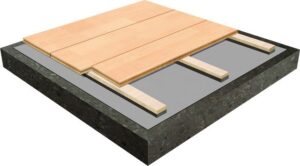
May 14, 2021
Wednesday 2 June 2021
In this session we discussed academic approaches of studying popular culture, how popular culture is approached in dance scholarship, and where tap dance fits into these topics. We started off the session with these questions to consider:
- How is tap dance portrayed in popular culture in the late 20th and 21st centuries?
- What makes something part of popular culture and who decides that?
- How can we engage in the discourse of popular culture and dance, e.g., within the jazz dance continuum or trends such as TikTok?
- What are opportunities, challenges, impacts of thinking about tap dance from the perspective of popular culture?
- How does considering tap dance as part of popular culture affect the way we tap dance, educate, create, function commercially?
Sally Crawford-Shepherd shared definitions of popular culture, such as how it is a collection of artefacts like films, music albums, and television programmes. However, popular culture often has different definitions due to individual cultures, groups, or societies having shifting values of what they perceive to be popular. She shared how popular culture is approached in academia through frameworks and theories such as The Frankfurt School, Feminist Theory, Marxism, Mass Culture studies, Mass Media, and Popular Music.
The discussion also covered how popular culture is approached in Dance Studies, and how the terms ‘social dance’, ‘vernacular dance’, and ‘popular dance’ are often used interchangeably. She shared Sherril Dodds’ work on popular dance studies, referencing how ‘[a] burgeoning interest in popular dance came to the fore in the 2001 winter edition of Dance Research Journal, which was devoted to ‘social and popular dance’. That an entire issue centred on dance practices situated outside the hallowed ground of the theatre dance canon indicated a nascent shift in dance studies towards an increasingly relativist position’ (Dodds 2011, 45). She included references for the group to explore (listed below) and another dance research group Pop Moves (popmoves.com) that shares and develops resources on popular dance research.
The discussion among the group included:
- Factors that performers and artists need to negotiate when working in the domain of popular culture. The group discussed examples where artists balance the integrity of the work and its connection to history and culture, with commercial factors which are also often needed to ensure the longevity of careers and success of the art form. We discussed the importance of key tap dance role models that exist in the domain of popular culture and the positive influences that individuals can exert when popularity is achieved with integrity.
- The role of social media and online phenomenons such as TikTok and YouTube in creating a greater presence for tap dance as popular culture. We discussed examples of tap dancers that have been successful in engaging with this and the affect it has had upon their profile and careers.
- The group discussed the numerous ways in which a practice such as tap dance can shift as it moves from being a practice within a specific community to a ‘popular’ form. This process involves not only artists and performers, but also producers, directors etc.
- The ways in which popular culture generates opportunities that are important to the continued success of a dance form. In this way, pop culture is relevant in terms of providing access to ‘gate keepers’ in the performing arts sector and industry.
Resources:
An Introduction to Theories of Popular Culture by Dominic Strinati
Cultural Theory and Popular Culture: An Introduction by John Storey
Beyond Blackface: African Americans and the Creation of American Popular Culture 1890-1930 by W. Fitzhugh Brundage
Dancing on the Canon: Embodiments of Value in Popular Dance by Sherril Dodds
Bodies of Sounds: Studies Across Popular Music and Dance by Sherril Dodds and Susan C. Cook
Ballroom, Boogie, Shimmy Sham, Shake: A Social and Popular Dance Reader Edited by Julie Malnig
The Oxford Handbook of Dance and Competition Edited by Sherril Dodds
The Oxford Handbook of Dance and the Popular Screen Edited by Melissa Blanco Borelli
May 11, 2021
We are thrilled to be presenting a Panel at the Modes of Capture Symposium held by the Irish World Academy, University of Limerick, Liz Roche Company & Dublin Dance Festival. This year’s symposium explores the theme of decolonising structures, thinking and embodiment within current modes of dancemaking and documentation.
‘Tap Dance Knowldges’ is a panel exploring the concepts of legacy, tradition, innovation and authenticity within today’s global tap scene.
This paper/practice sharing discusses tap improvisation practices as knowledges in teaching, creative process and performance. We explore the concepts of legacy, tradition, innovation and authenticity, as well as reflecting on the rich and diverse global tap scene of today. An important part of skill acquisition, transmission and dissemination of information about the art form is from preservation of twentieth century American tap performance repertoire and understanding of improvisation practices from jazz music. Applying a historical framework reveals how this initiated with the performances of American tap dancers being celebrated and presented as a form of legacy. Our questions are: How and where are these knowledges held? What role does legacy have in evolving performing knowledges? How do we acknowledge the history and legacy of American tap dancers and produce new knowledges in the twenty first century?
Furthermore, we explore the under-representation of tap dance in UK Higher Education, in teaching and research. We advocate for rethinking curricula and decolonization of tap dance as a form created through African American cultural practices. The UK has a particular context within which tap dance sits, linked to the US, Ireland and other communities. We seek ways to highlight cross-disciplinary connections and evolving interpretations of tap dance legacies, different methods of practice and performance that may evoke new knowledges, the importance of communities of practitioners in disseminating information, performer identities and embodying new knowledges.











